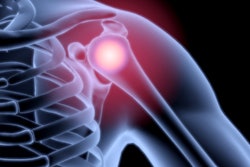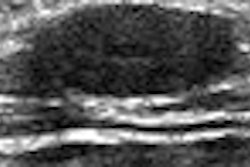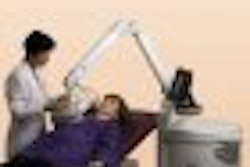3D sonography is more time-efficient than traditional 2D sonography for various indications, according to research published in the April issue of the American Journal of Roentgenology.
"This study showed significantly better workroom time efficiency with use of 3D sonography than with traditional 2D sonography in pelvic, renal, small-parts, and shoulder examinations in a community hospital," wrote researchers from the University of British Columbia and Lions Gate Hospital in Vancouver. "These findings suggest that in the correct clinical setting, adopting 3D scanning protocols may greatly improve patient throughput."
To compare the efficiency of 3D sonography with 2D sonography in examinations of the kidney, shoulder, and small parts, the researchers studied a random sample of 23 patients who consecutively received 3D sonography on a single day. The exams were performed by four sonographers with one to 25 years of experience according to a predetermined protocol (AJR, April 2007, Vol. 188:4, pp. 966-969).
For patients receiving 3D shoulder examinations, a radiologist also immediately performed a traditional 2D ultrasound scan to confirm the diagnostic accuracy of the 3D approach. An additional random sample of 40 patients received consecutive traditional 2D sonography examinations the following day.
Both patient cohorts included a mixture of patients who received shoulder, renal, small-parts, and pelvic scans; exams were all performed using a Logiq 9 scanner (GE Healthcare, Chalfont St. Giles, U.K.). The 3D scans were reviewed by one of four general radiologists with four to 30 years of sonographic experience, on a PACS network with a LogiqWorks 3D workstation (GE Healthcare).
For the 3D patients, the mean time per examination was 11.48 ± 3.55 minutes, while the 2D cohort had a mean time per examination of 25.3 ± 11.64 minutes. The difference was statistically significant, according to the researchers.
"Our results show that a 3D sonographic examination can be performed in 45.4% of the time required for an equivalent traditional 2D sonographic examination," the authors wrote.
While actual scanning times for each technique were similar, significant time savings occurred for 3D after scanning, the study team noted.
"The 3D dataset eliminated the need for sonographers to review their images and await review with a radiologist," the authors stated. "It also eliminated the need for a radiologist to directly scan the patient."
In addition, no changes were made to the 3D shoulder diagnosis following 2D scanning, according to the study team. The four sonographers in the study also expressed a preference for the 3D protocols over the traditional 2D technique.
"They also subjectively believed that they were able to discharge patients in a more timely manner, and that in more complex cases they would be able to discharge patients without waiting for radiologist review," the authors wrote.
The study suggests that 3D sonography can greatly improve workroom efficiency for various indications in community hospitals, the study team concluded.
"At our institution, we continue to use 3D protocols with significant time savings for pelvic, renal, small-parts, and shoulder examinations," the authors wrote. "As we gain experience and confidence with this technology, we continue to alter and refine our booking schedules and increase patient throughput."
By Erik L. Ridley
AuntMinnie.com staff writer
March 29, 2007
Related Reading
3D ultrasonography an accurate modality for investigating functional dyspepsia, January 2, 2007
The future of ultrasound: Used by many, understood by few, October 27, 2006
3D brings opportunities to sonographers, August 4, 2006
2D ultrasound offers similar info to 3D/4D obstetric US, June 8, 2006
3D ultrasound brings efficiency gains, May 25, 2006
Copyright © 2007 AuntMinnie.com



















